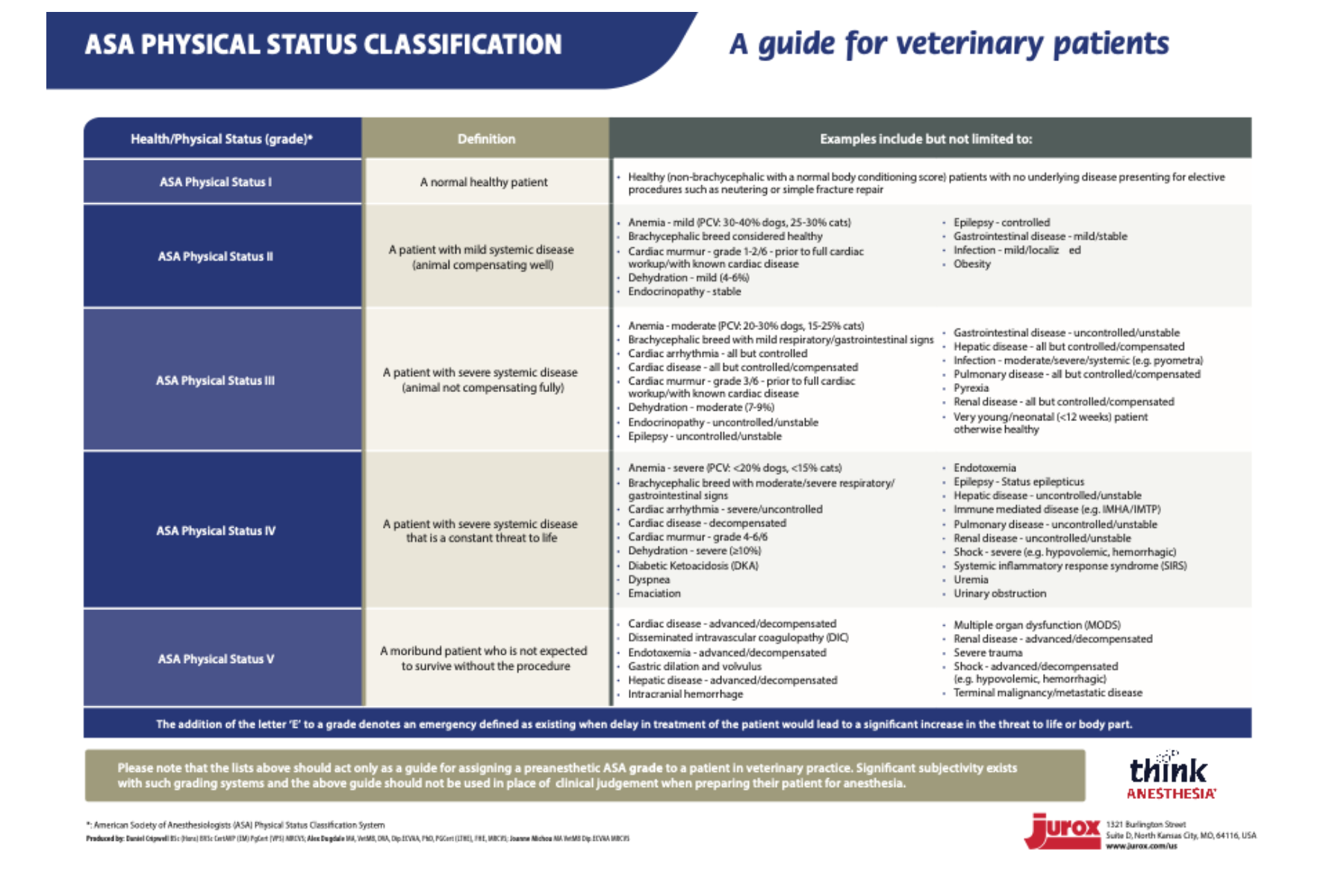4 Ways to Make Your Veterinary Anaesthetic Safer
Ensuring patient safety during veterinary anaesthesia is a cornerstone of effective perioperative care. As a veterinary professional, particularly a vet nurse, understanding and implementing strategies to minimise anaesthetic risks can lead to better outcomes and improved patient care. In this guide, we’ll explore four practical ways to enhance anaesthetic safety, focusing on ASA grading, surgical safety checklists, surgical procedure considerations, and mastering your multiparameter monitor.
1. Use ASA Grading for Risk Assessment
The American Society of Anaesthesiologists (ASA) Physical Status Classification System is a vital tool for assessing a patient’s preoperative health. By assigning a grade (I-VI), you can evaluate the patient’s baseline condition and tailor your anaesthetic plan accordingly.
- Why it matters: Higher ASA grades correlate with increased anaesthetic risks. For example, an ASA III patient with severe systemic disease may require additional monitoring and support, such as IV fluids, blood transfusions, or frequent parameter checks like blood glucose in diabetic patients.
- Tip: Combine ASA grading with thorough patient history and diagnostics, including blood and urine tests. This approach helps identify and address modifiable risk factors before the procedure.
2. Implement Surgical Safety Checklists
The Surgical Safety Checklist is a proven tool to ensure all team members are aligned, critical steps are covered, and patient safety is prioritised throughout the procedure.
- Why it matters: Checklists improve communication, verify essential details such as allergies and surgical site, and ensure all necessary equipment and medications are ready. They also help with smooth transitions from the anaesthesia team to the recovery and discharge teams, ensuring continuity of care.
- Tip: Tailor the checklist to your team’s workflow to enhance compliance. For instance, shorter, focused checklists may be more effective for smaller caseloads, reducing unnecessary complexity while maintaining safety standards.
3. Consider the Surgical Procedure
Each surgical procedure presents unique challenges and risks, influencing your anaesthetic decisions. Understanding the specifics of the surgery can help you anticipate potential complications and adjust your approach proactively.
- Why it matters: Certain procedures, like laparoscopic surgeries, can cause physiological changes such as increased intra-abdominal pressure or reduced lung compliance, necessitating adjustments to ventilation and anaesthetic protocols.
- Tip: Collaborate with the surgical team to understand the procedure’s timeline, patient positioning, and potential complications. For example, knowing the critical points of a bitch spay, such as breaking down the ovarian ligament, allows you to prepare pre-emptive analgesia or adjust ventilation strategies if hyperventilation occurs.
4. Master Your Multiparameter Monitor
Modern multiparameter monitors provide insights into vital signs such as ECG, oxygen saturation, blood pressure, temperature, and end-tidal CO₂. These tools are indispensable for detecting physiological changes during anaesthesia.
- Why it matters: Continuous monitoring helps identify and address issues like hypoxia, hypotension, or arrhythmias promptly. Early intervention can significantly improve patient outcomes.
- Tip: Invest time in learning the advanced features of your monitor, such as trending data and alarm thresholds. Regularly calibrate your equipment and understand troubleshooting techniques to distinguish between true abnormalities and equipment errors.

What Vet Nurses Can Take Away
By integrating these four strategies—ASA grading, surgical safety checklists, surgical procedure considerations, and mastering your multiparameter monitor—you can increase the standard of veterinary anaesthesia and patient care. Each strategy emphasises planning, vigilance, and teamwork, ensuring your patients receive the safest possible care.
Need Help Mastering Your Multiparameter?
VetriNurse CPD offers in-house CPD training tailored to veterinary teams. Our multiparameter training covers everything from setup to interpreting normal and abnormal parameters, troubleshooting, and understanding how these relate to anaesthetic drugs, breed-specific considerations, and surgical procedures. Additionally, purchase one of our Anaesthesia Pocket Guides which are handy for set up and interpretation of the multiparameter.
Cant Make Time In Practice?
VetriNurse CPD are hosting a live CPD event in January near Preston which offers 7 hours of CPD with practical aspects involved. The day focuses on CPR and the multiparameter with touches on anaesthesia. Breakfast, lunch, snacks and lots of free resources are included!





